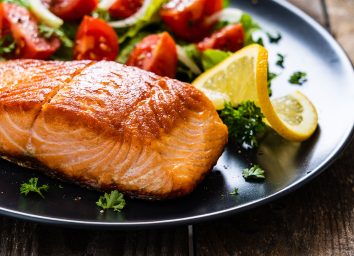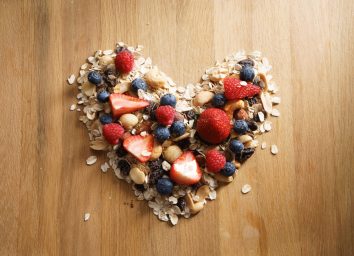26 Best Omega-3 Foods to Fight Inflammation and Support Heart Health
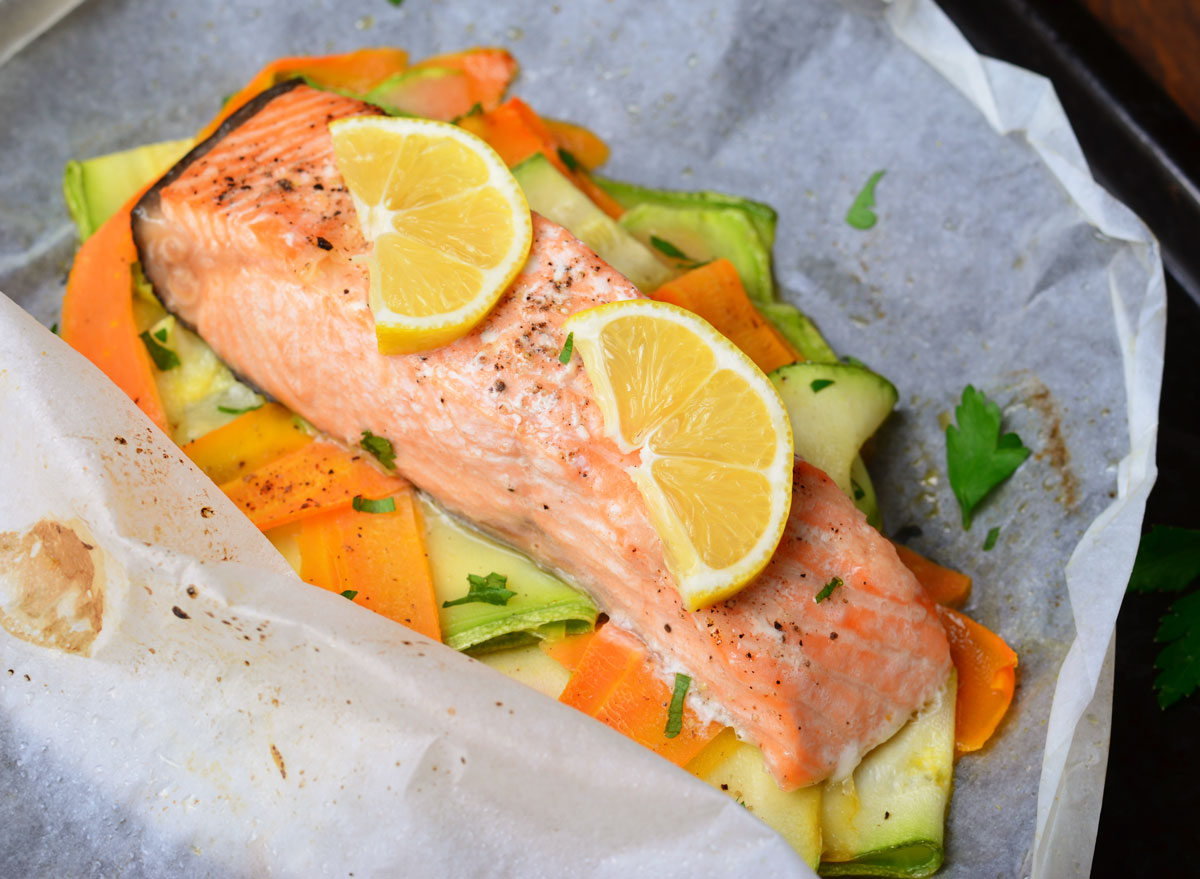
Omega-3 fatty acids have been touted as something akin to miracle nutrients. Studies have connected the consumption (or deficiency) of these essential fatty acids to chronic diseases such as heart disease and diabetes, inflammation, and brain health. In fact, a study published in Nutritional Neuroscience found that omega-3 supplementation may be beneficial for Alzheimer's disease patients at the onset of symptoms.
The good news is that you don't need to hit up your local health food store to get your fill; Instead, you can incorporate the following omega-3 foods into your diet. To boost your ability to ward off chronic disease, you can also check out our list of the best anti-inflammatory foods.
What are omega-3s?
Omega-3 fatty acids are long chains of fats found naturally in many of our healthiest foods, especially wild salmon, which has more than 1,500 milligrams in a 3-ounce portion. They're called "essential" fatty acids because the human body cannot produce them naturally, so the only way we can consume them is through our diet.
There are three main types of omega-3s—eicosapentaenoic acid (EPA), docosahexaenoic acid (DHA), and alpha-linolenic acid (ALA)—and one additional omega-3 that's recently been found to also convey health benefits: docosapentaenoic acid (DPA).
DHA, EPA, and DHA are found in fish and other seafood, although DPA is found in much lower concentrations than DHA and EPA, according to a review in Lipid Technology.
ALA is found in plants, plant-based oils, and animal products who feed on an ALA-rich diet.
What are some health benefits of omega-3 fatty acids?
1. Reduced Inflammation: In a study in Circulation Journal, researchers looked at the BMI, body fat, and weight gain in 1,053 residents over 40 years of age. Their blood was tested for C- reactive protein (CRP), a marker of inflammation. In the study, BMI and body fat increased significantly as CRP levels increased. "A high concentration of CRP was significantly associated with obesity." But omega-3s can overcome inflammation. In a second European Journal of Clinical Nutrition study, 17 healthy young adults were put on a 10-week diet of reduced omega-6s and increased omega-3s. After 10 weeks, adiponectin—a healthy protein secreted by fat cells that reduces inflammation—rose significantly, while tumor necrosis factor, a protein involved in triggering systemic inflammation, declined significantly.
2. Decreased Hunger Levels: In a study of 232 overweight and obese volunteers in the journal Appetite, researchers put obese and overweight subjects who were in the last two weeks of an eight-week weight-loss plan on either high or low doses of omega-3s. Those on the high-dose plan reported being more satisfied and less hungry two hours after their meal than those who got the lower dose of omega-3s.
3. Reduced Inflammation and Increased Fat Burn: A 2010 report in Nutrients found that at sufficiently high intake, omega-3s decrease the production of cytokines—inflammation-promoting compounds produced by belly fat—and improve fat metabolism by altering the expression of inflammatory genes.
4. Improved Blood Sugar Regulation: In a Brazilian study of 148 people who were at risk of diabetes, published in the journal Nutrition, subjects with the highest ratio of omega-3s to omega-6s in their blood were more likely to improve their blood glucose levels and reduce their diabetes risk.
5. Increased Effects of Exercise on Weight Loss: Researchers at the University of South Australia put 75 overweight people on one of four regimens—omega-3 supplements with or without exercise, or omega-6 supplements with or without exercise. Over 12 weeks, the group that combined omega-3 supplements with exercise experienced dramatic weight loss; none of the other three sets of subjects did.
Do you need to take omega-3 supplements?
With the health benefits of omega-3 increasingly becoming known, people have been stocking up on supplements to get their daily intake; however, researchers find that this might not be the most effective solution to reap their health benefits.
"If you want to get more omega-3 fatty acids in your diet, the best way is to get it through food," Elizabeth Johnson, a researcher at Tufts University who studies the role of antioxidants in eye and brain health, told NPR.
So if you're shelling out money for fish-oil tablets, consider this good news: You can stop swallowing those horse-pill-sized gel caps and go back to eating real food—including burgers, eggs, and even caviar.
These are the best food sources of omega 3 fatty acids.
We've identified some of the most unlikely, and most delicious, ways to get your 1,100 milligrams of daily omega-3s recommended by the National Institutes of Health (men should get 1,600 milligrams daily).
These 26 omega-3 foods are listed from lowest concentration of omega-3 fatty acids to highest concentration per serving.
To calculate omega-3 content of the following foods, we consulted the USDA's food database and added up the total of ALA, DHA, EPA, and DPA for each one. Eat up, and let the benefits begin!
Grass-Fed Beef
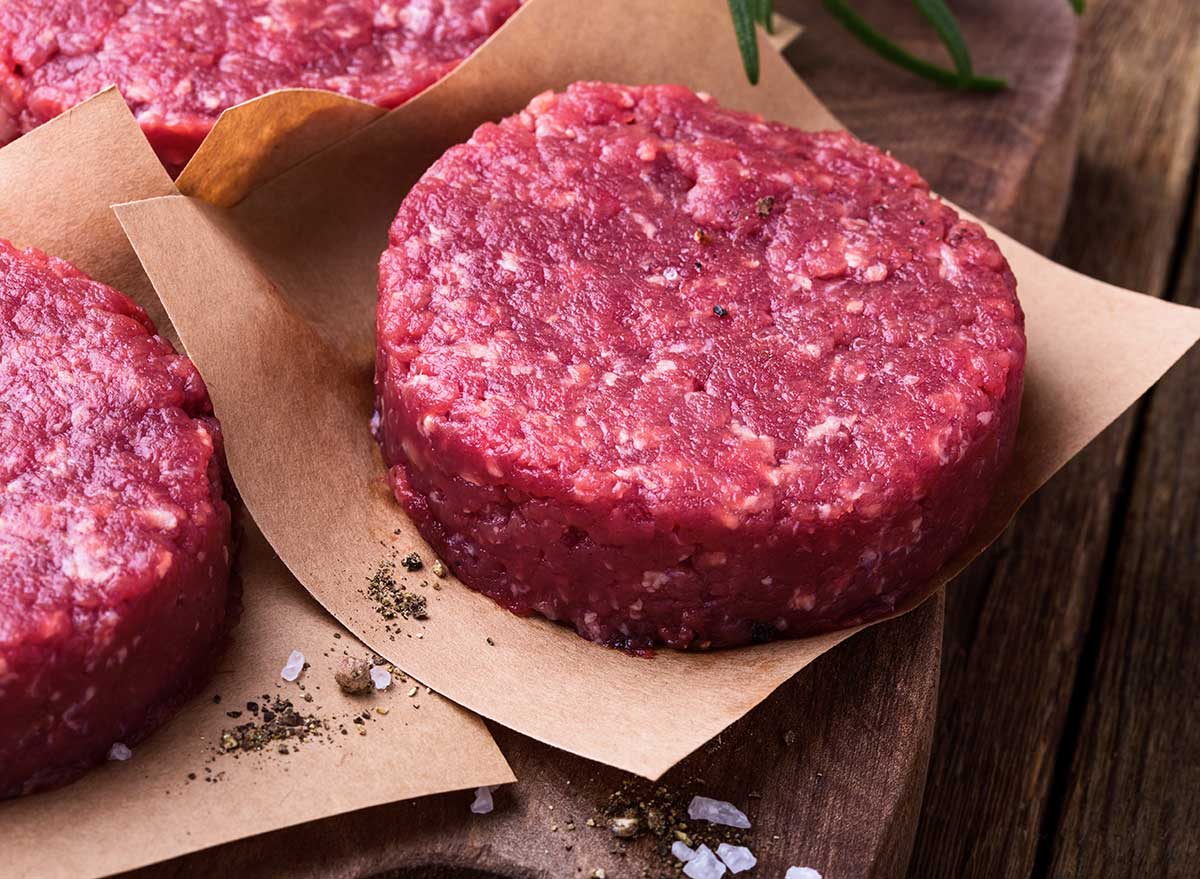
Omega-3 content: 149 mg per 6-ounce (ground, raw)
Because they wander around in fields eating things like flax and purslane (about which you'll read, below), grass-fed cows yield meat that contains four times more omega-3s than grain-fed animals, according to a Nutrition Journal review.
Wild Rice
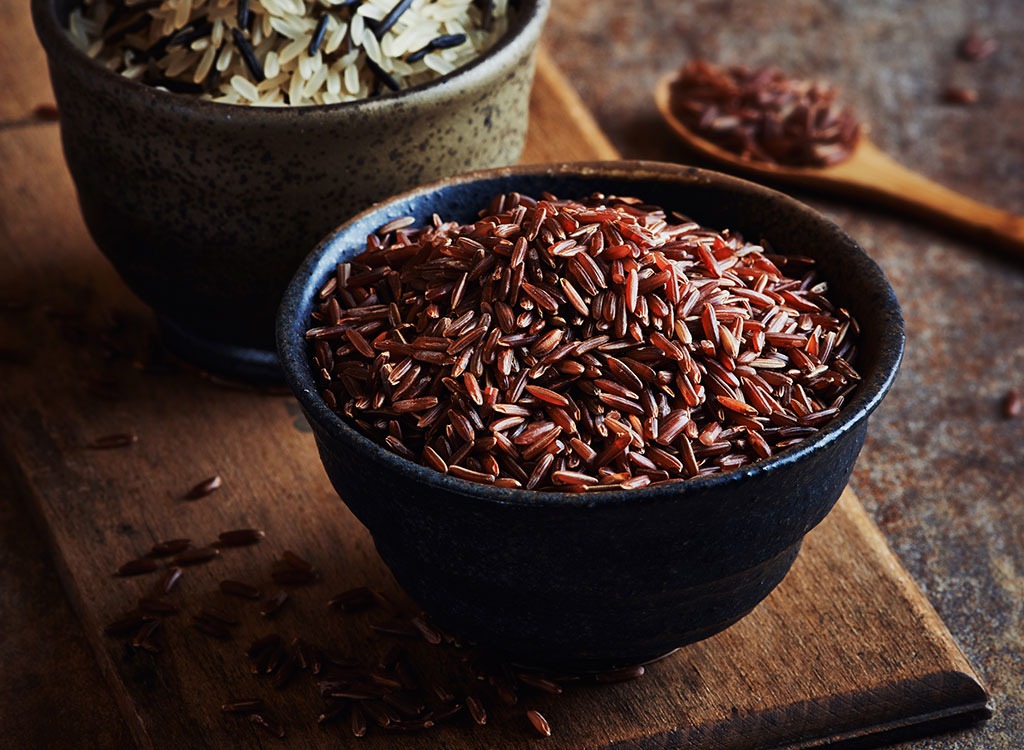
Omega-3 content: 156 mg per 1 cup (cooked)
Diet experts go ga-ga for brown rice, but it's wild rice that tugs on our heartstrings as a weight-loss wonder food. After all, the native American grain has nearly double the fiber and protein, and fewer calories, as its arguably more popular cousin. Whole grains have a proven reputation as a weight-loss staple. In one study, Tufts University researchers found dieters on a calorie-restricted diet who ate whole grains like rice lost significantly more belly fat than a group who consumed the equivalent number of calories from refined carbohydrates. Another grain high in omega-3s: kamut.
Spinach
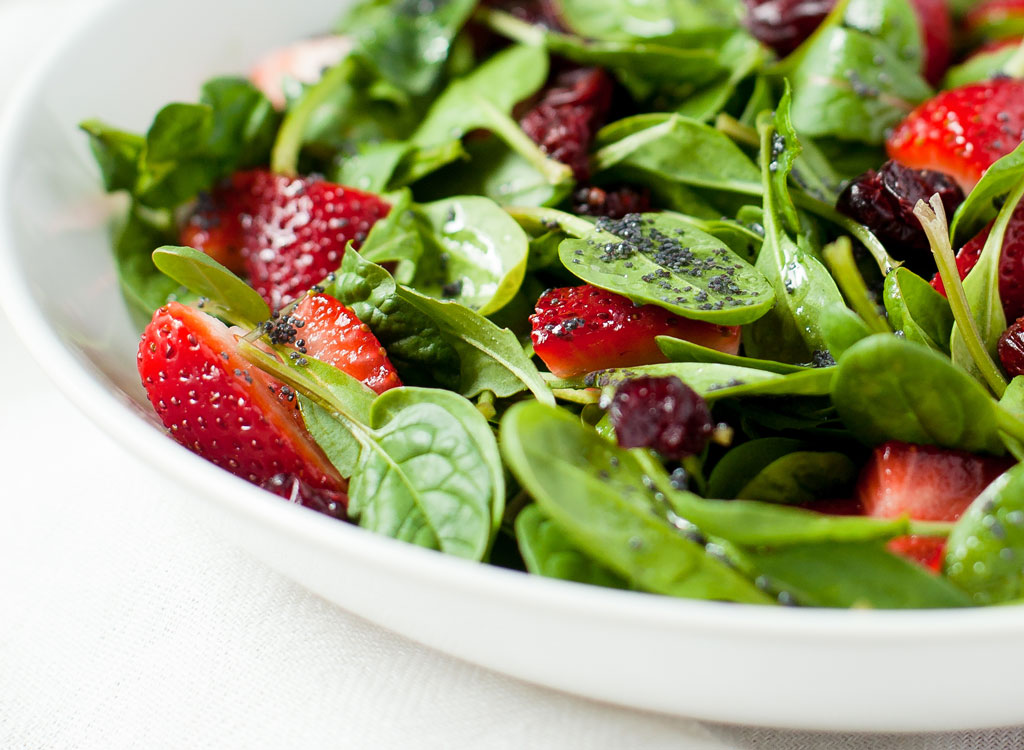
Omega-3 content: 166 mg per 1 cup (cooked), 41 mg per 1 cup (raw)
At only 40 calories per cooked cup, spinach is also rich in vitamin E and the compounds betaine
and choline, which work together to turn off fat storage genes. Recent research suggests compounds in the leaf membranes called thylakoids may also serve as powerful appetite suppressants. Participants in the three-month study who drank a breakfast smoothie containing spinach thylakoids had fewer cravings and lost 5.5 pounds more than the placebo group.
Omega-3 Eggs

Omega-3 content: 225 mg per egg
Eggs turn up on many of our "best lists" because they are chock-full of protein, vitamins, antioxidants, and a fat-fighting nutrient called choline. Omega-3-enriched eggs are laid by hens that are fed flax seeds, chia seeds, and fish oil, thereby automatically improving your cluck!
Mustard Seed
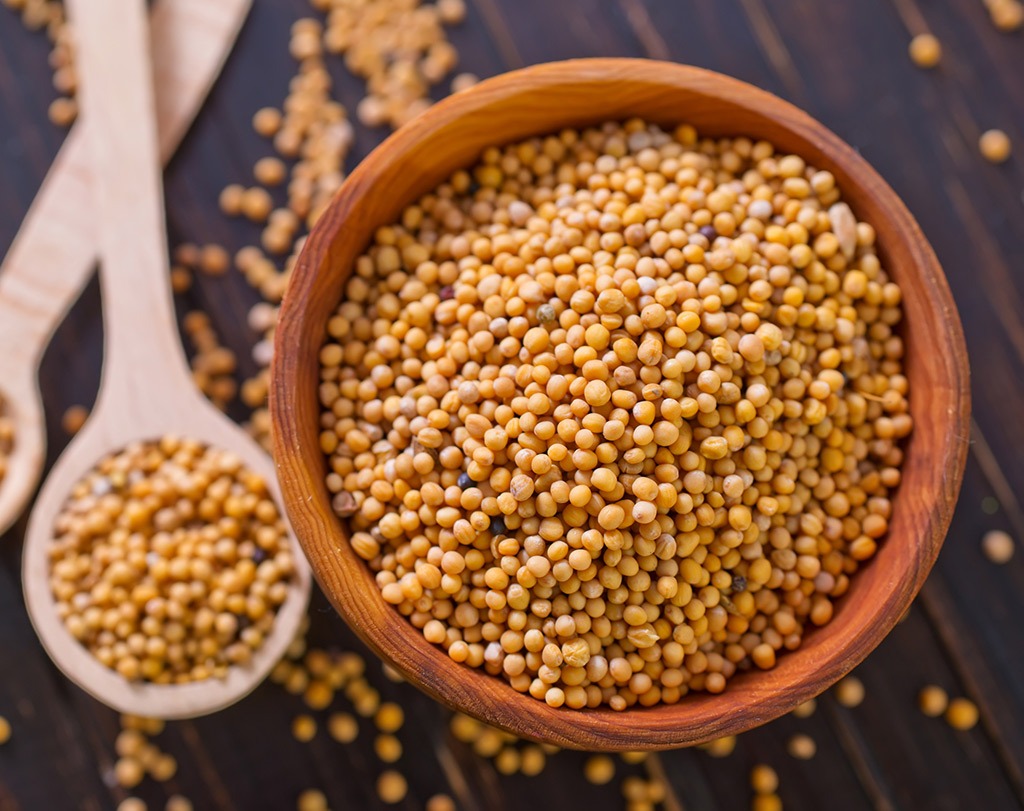
Omega-3 content: 239 mg per Tbsp (ground)
One tiny teaspoon of ground mustard provides 100 milligrams of omega-3s, plus serious fat-burning potential. Scientists at England's Oxford Polytechnic Institute found that a teaspoon of the hot stuff was enough to boost the metabolism by up to 25 percent for several hours after eating. Researchers attribute the weight loss benefits to allyl isothiocyanates, compounds that give the mustard its characteristic flavor. You can use ground mustard seed as you would black pepper—put a dash on your salmon for a double dose of omega-3 goodness!
Red Lentils
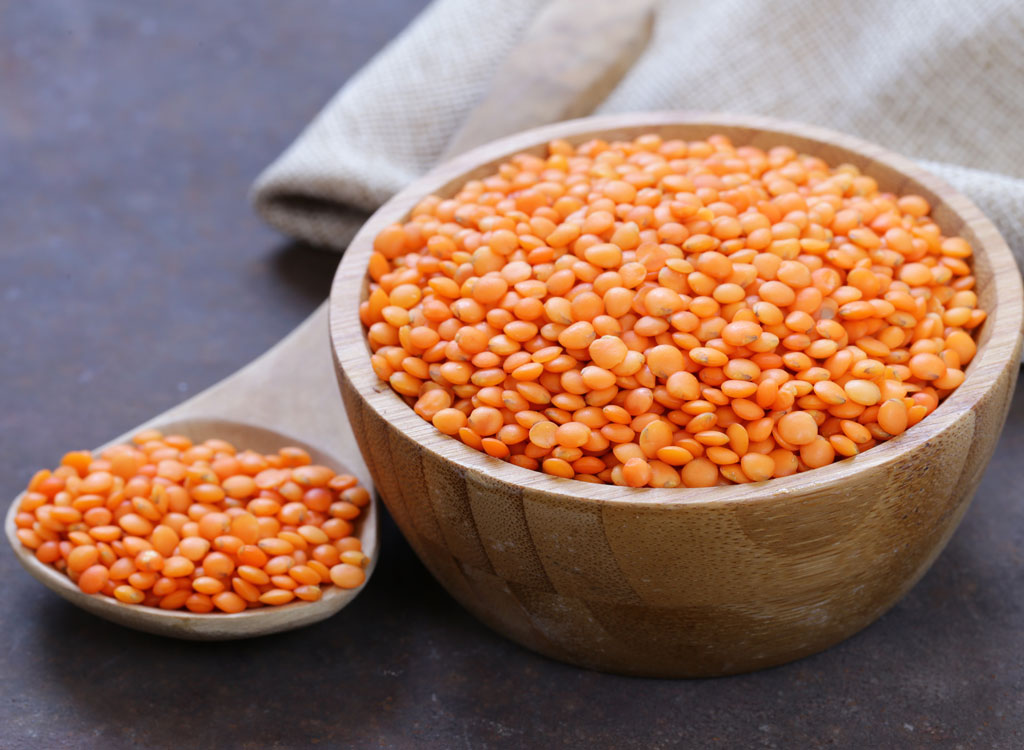
Omega-3 content: 240 mg per ½ cup (raw)
Lentils are an inexpensive dietary plus, touted by weight-loss experts for their ability to boost fat metabolism and regulate appetite. Researchers say the slimming benefits can be attributed to resistant starch, a form of slow-digesting fiber that triggers the release of acetate, a molecule in the gut that signals the brain when it's time to stop eating. In fact, people who ate a daily serving of lentils (about ¾ cup) felt an average 31 percent fuller compared with a control diet, an American Journal of Clinical Nutrition systematic review of clinical trials on legumes found.
Purslane

Omega-3 content: 300 mg per ½ cup
What the heck is purslane? While not a common food in most of the U.S., this sour, slightly salty green is often used in Greek and Turkish cooking. You can find it at farmers' markets in spring and summer, but the most likely place you'll encounter it is growing in the cracks of your driveway. A weed to most, it was a regular part of Gandhi's diet, and a mere half cup has more than 1,000 IUs of vitamin A. This might be the cheapest stealth health food in the world
Winter Squash
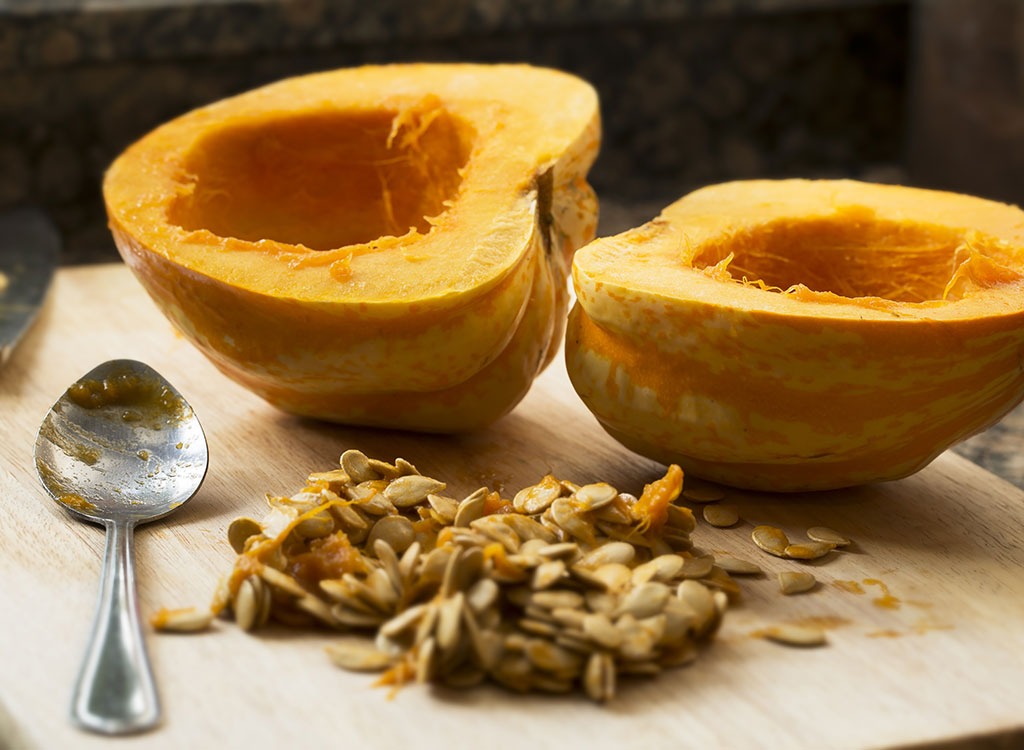
Omega-3 content: 332 mg per 1 cup hubbard squash
More squash = less squish. A cup of winter squash provides one-third the recommended daily intake of vitamin C—a nutrient that researchers say is directly related to the body's ability to burn through fat. In fact, one study by researchers at Arizona State University showed deficiencies of vitamin C were strongly correlated with increased body fat and waist measurements.
Navy Beans
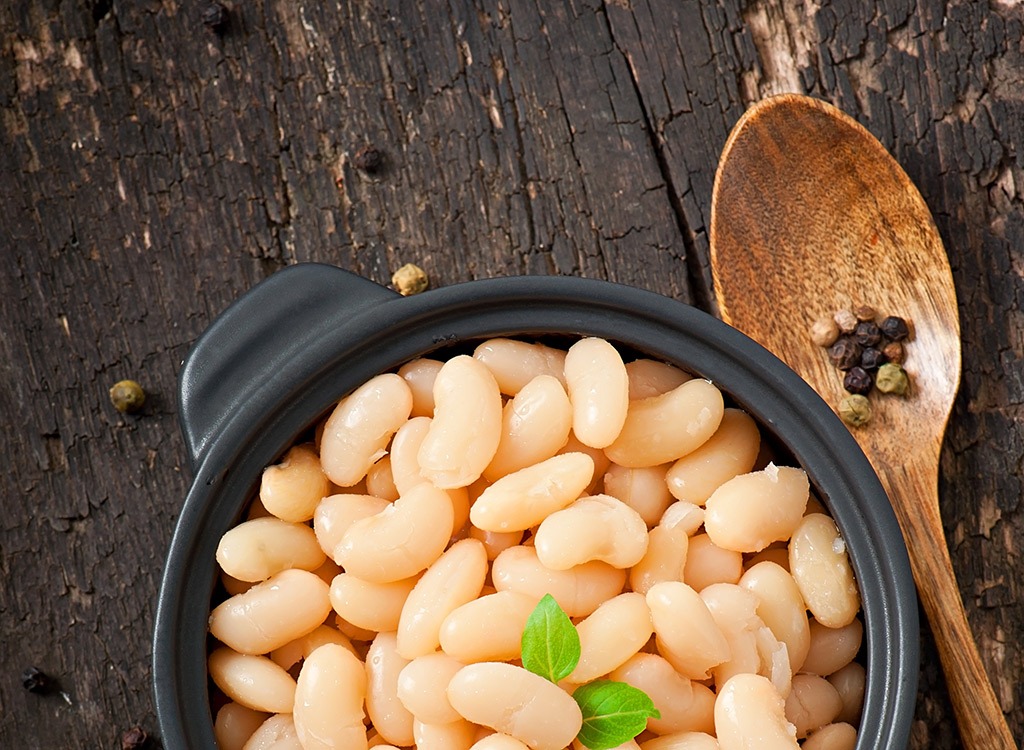
Omega-3 content: 375 mg per 1 cup (cooked)
Not only are beans a great source of belly-fat-fighting fiber, a single cup gives you nearly an entire day's worth of omega-3s. Navy beans are packed with satiating protein, and brimming with vitamins and minerals. Studies show that navy beans, in particular, can help battle diabetes and obesity.
Fontina Cheese
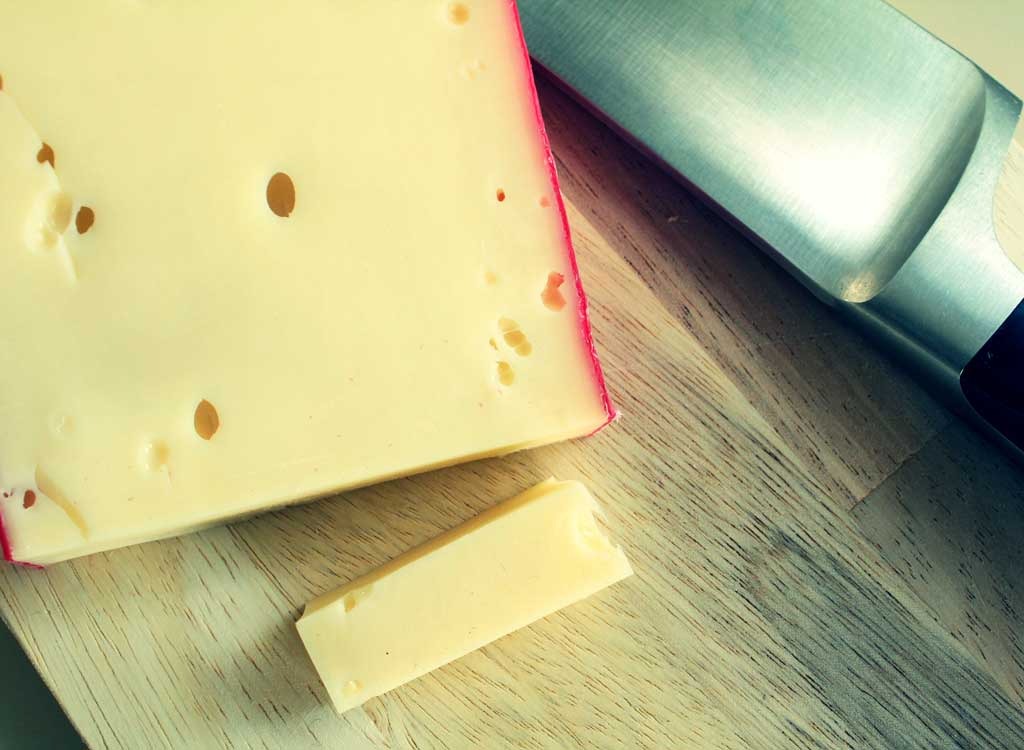
Omega-3 content: 448 mg per 2-ounce serving
Dairy has made a dietary comeback, with new research suggesting the high-fat products like cheese may help reduce the risk of obesity. Cheese-eaters lost more belly fat than a control group who took a calcium supplement, one Nutrition & Metabolism study found. The group that nibbled cheese also exhibited increased levels of butyrate, a fatty acid found in the gut proven to improve fat metabolism. Speaking of, make sure your metabolism is fired up and that's you're avoiding these 31 Ways You Messed Up Your Metabolism Today.
Firm Tofu
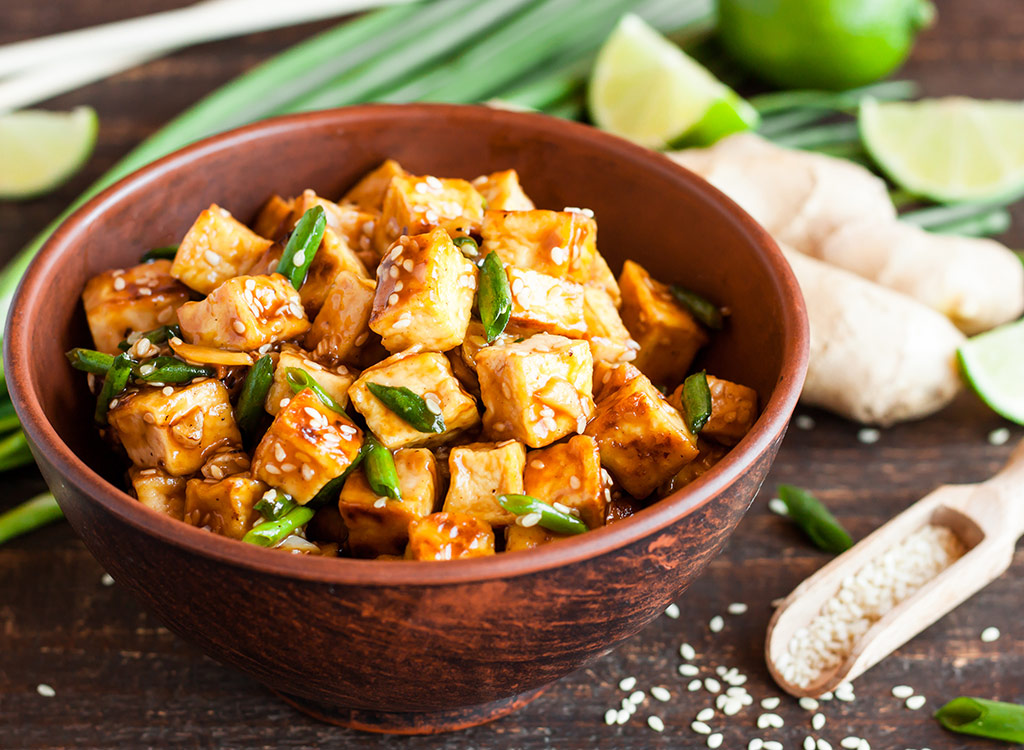
Omega-3 content: 495 mg per 3-ounce serving (85 grams)
It has the reputation of being bland and slimy, but like the high-school-nerd-turned-successful hottie, tofu is worth a second look. A solid curd made from mashed soybeans, it's a terrific source of plant-based protein with proven weight-loss potential. One study published in the journal European Journal of Clinical Nutrition showed dieters who followed a 12-week meal plan that included a soy-based protein replacement lost twice as much weight and saw greater reductions in cholesterol and belly fat than a control group whose equicaloric diet included protein from lean meats. And the omega-3 count is off the chart. On the fence about soy? We totally understand—that's why we explain everything you need to know about soy side effects.
Anchovies
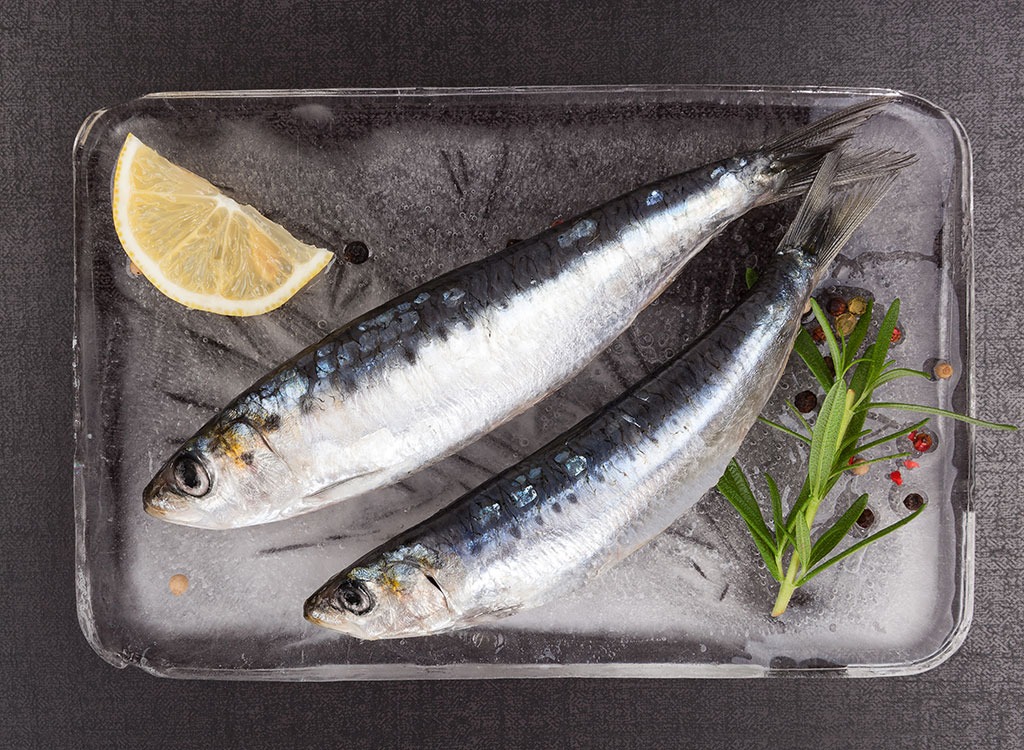
Omega-3 content: 594 mg per 1 ounce (canned in oil, drained)
The debate over pizza toppings is settled. While salmon, tuna, halibut, and other popular fish grab all the omega-3 glory, the humble anchovy is often forgotten about. But just a couple of slices of anchovy pizza get you more than halfway to your daily quota. The superfish is also rich in calcium and potassium (both essential weight-loss minerals) as well as vitamin A.
Natto

Omega-3 content: 642 mg per ½ cup
This fermented soybean dish is not only a high source of omgea-3s, but it's also one of the best sources of vitamin K: a micronutrient essential for bone health.
Soybeans

Omega-3 content: 671 mg per ½ cup (dry roasted)
If you're thinking: "how am I supposed to eat dry roasted soybeans?" Don't worry, we have you covered. Seapoint Farms makes a dried edamame snack (soybeans and edamame are the same things). A half-cup serving will also deliver over 14 grams of protein and 8 grams of fiber.
Oysters
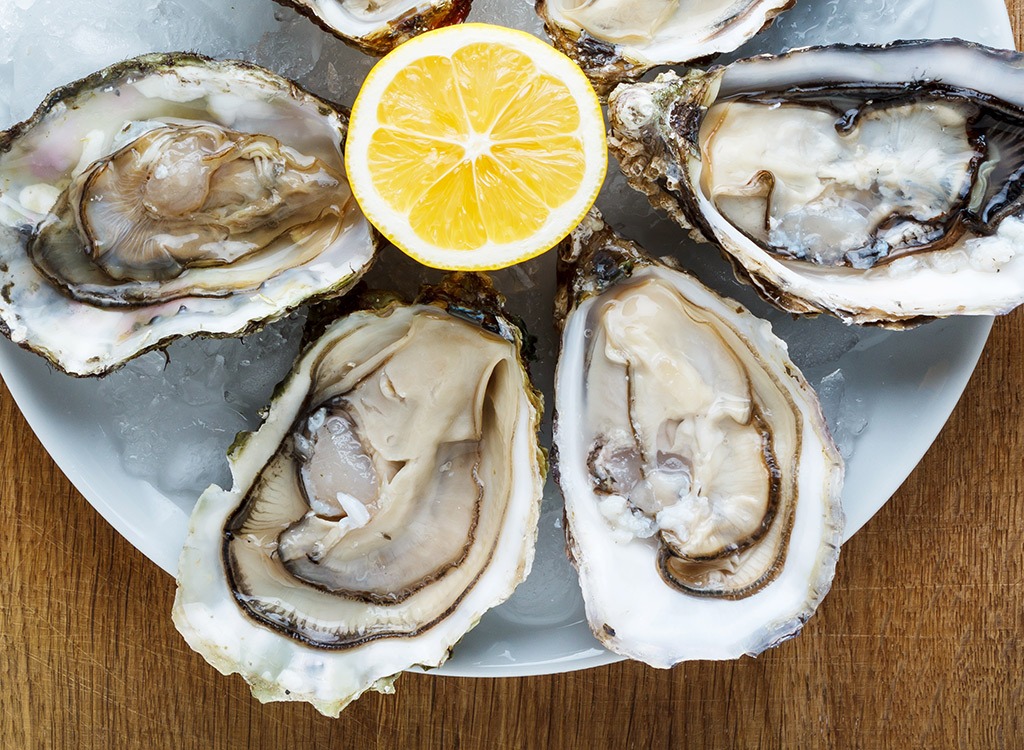
Omega-3 content: 720 mg per 3.5 oz (100 grams)
Oyster happy hour anyone? These shellfish are rich in more than just omega-3s. They're also rich in iron, potassium, and magnesium, all of which have been shown to have mood-boosting benefits.
Hemp Seeds
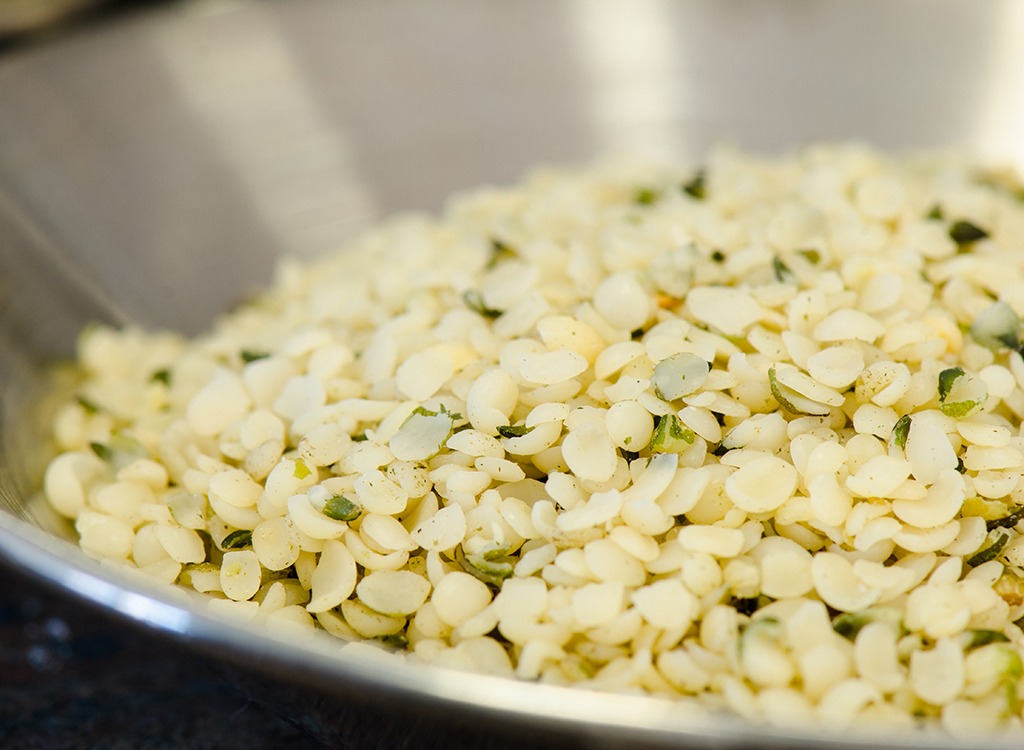
Omega-3 content: 1,000 mg per 1 Tbsp
For a supplement-sized dose of omega-3s, add a tablespoon of hemp hearts to your smoothie, yogurt, or bowl of cereal in the morning.
Canola Oil
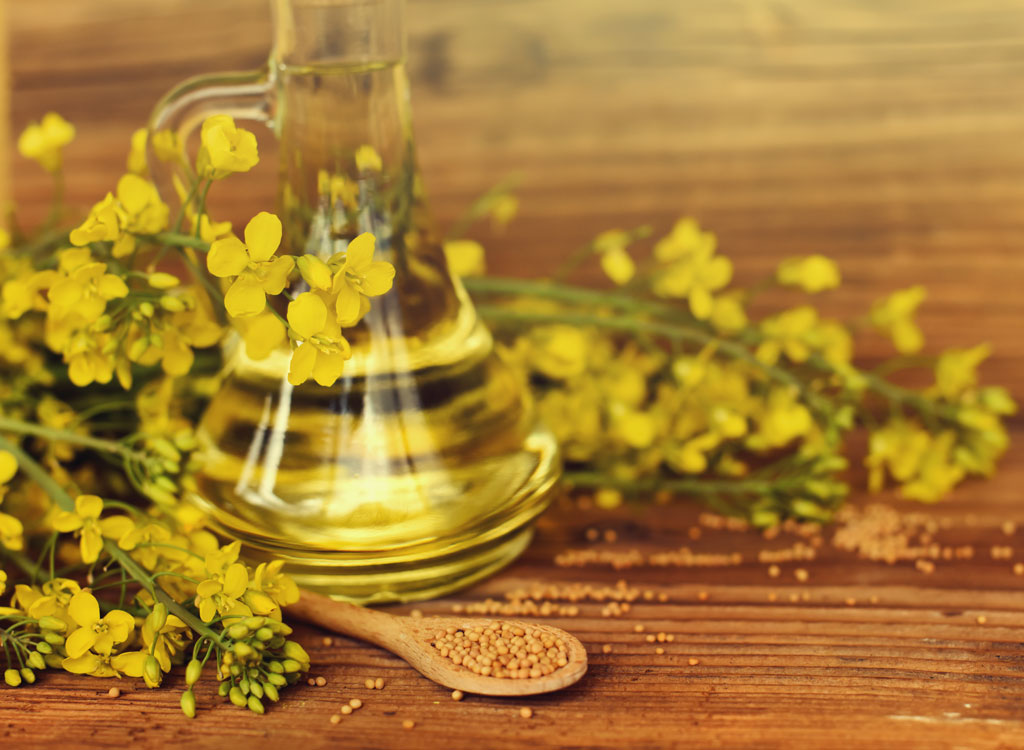
Omega-3 content: 1,279 mg per 1 Tbsp
While canola oil is an exceptional natural source of ALA omega-3 fatty acids, be cautious that it has nearly double the amount of inflammatory omega-6 fatty acids.
Herring
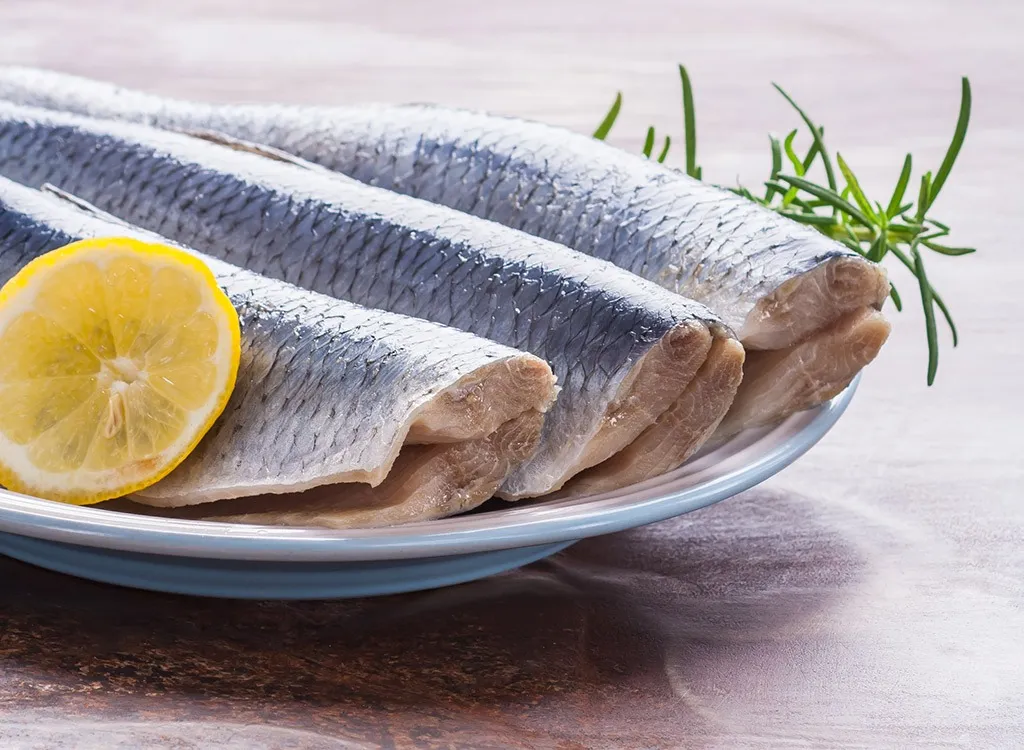
Omega-3 content: 1,674 mg per 3.5 oz (100 grams)
These small white fish are often found pickled. You can also buy fish and prepare as you would any other white fish: seared and based in a lemon, butter, garlic, and white wine sauce.
Caviar
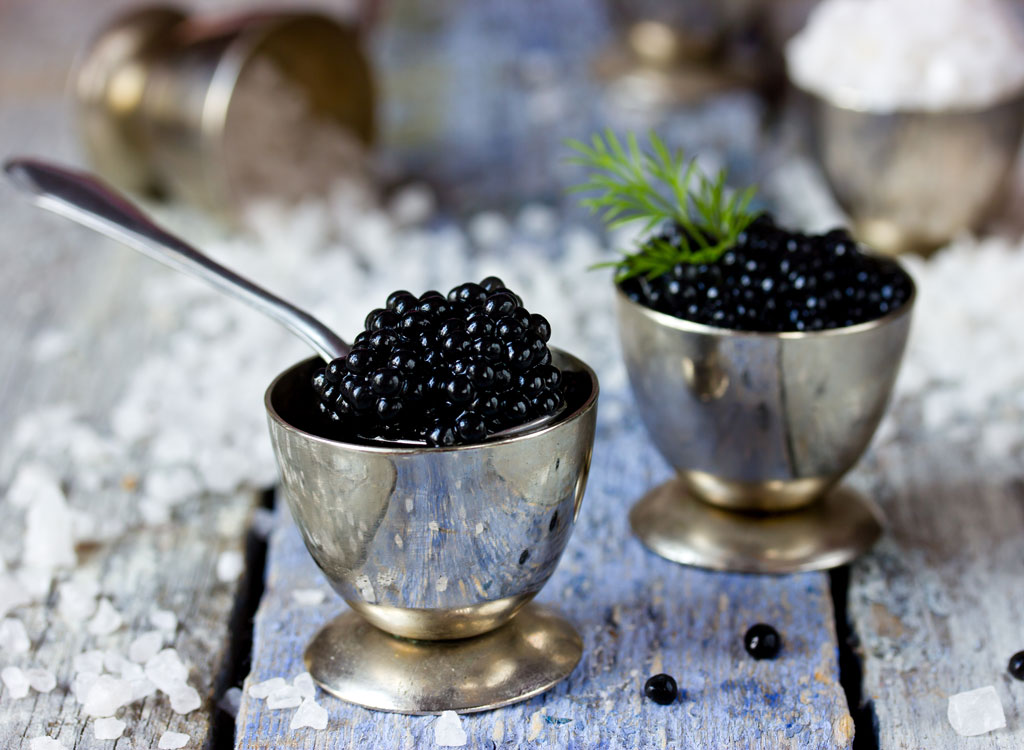
Omega-3 content: 2,098 mg per 2 Tbsp (32 grams)
Although this might be an expensive way to get your omega-3s, at least now you know when you shell out hundreds of dollars on a bite, at least you'll be getting anti-inflammatory benefits!
Chia Seeds
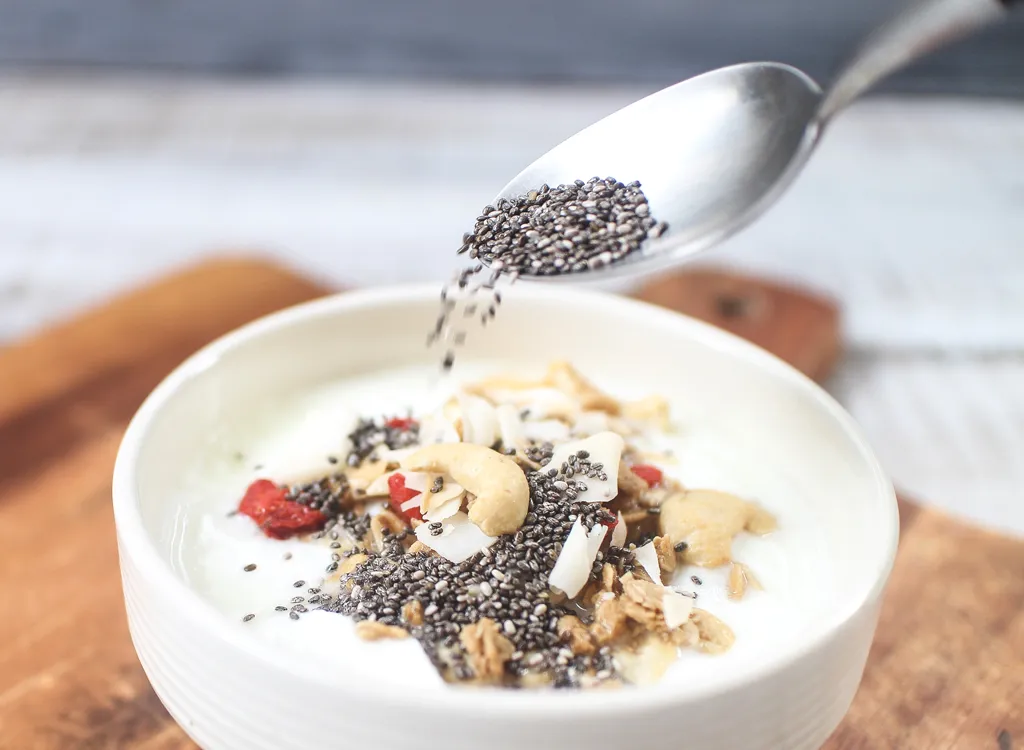
Omega-3 content: 2,140 mg per Tbsp (12 grams)
These nutty-tasting seeds of Chia Pet fame can be added to salads, smoothies, stir-fries and more to give your meals an omega-3 boost. A tiny shake each morning on your cereal ensures you're hitting your daily quota.
Sardines

Omega-3 content: 2,205 mg per cup (canned in oil, drained)
Add as a topper to your pizza, salad, or just serve alongside some crackers and bread with an extra dose of balsamic and red pepper flakes to get that steller source of omega-3 fatty acids.
Flax Seeds
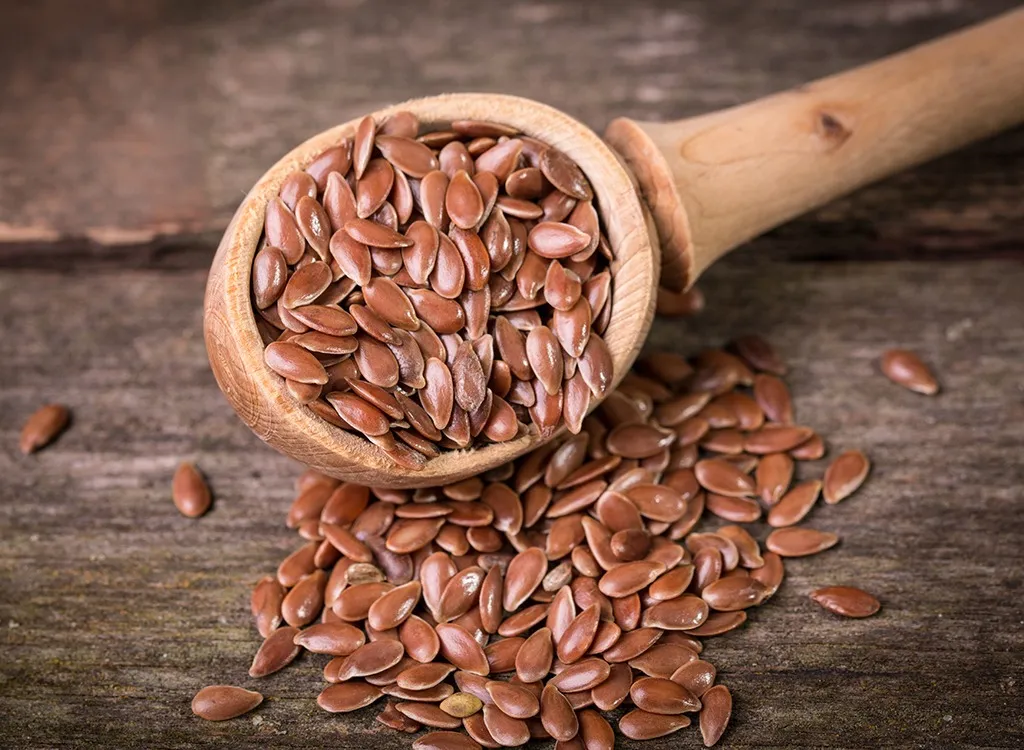
Omega-3 content: 2,350 mg per Tbsp
Tip: Ground your own or buy ground flax seeds to reap the most flaxseed benefits. The whole seed form is hard to digest, and grinding it beforehand makes its nutrients more bioavailable.
Walnuts
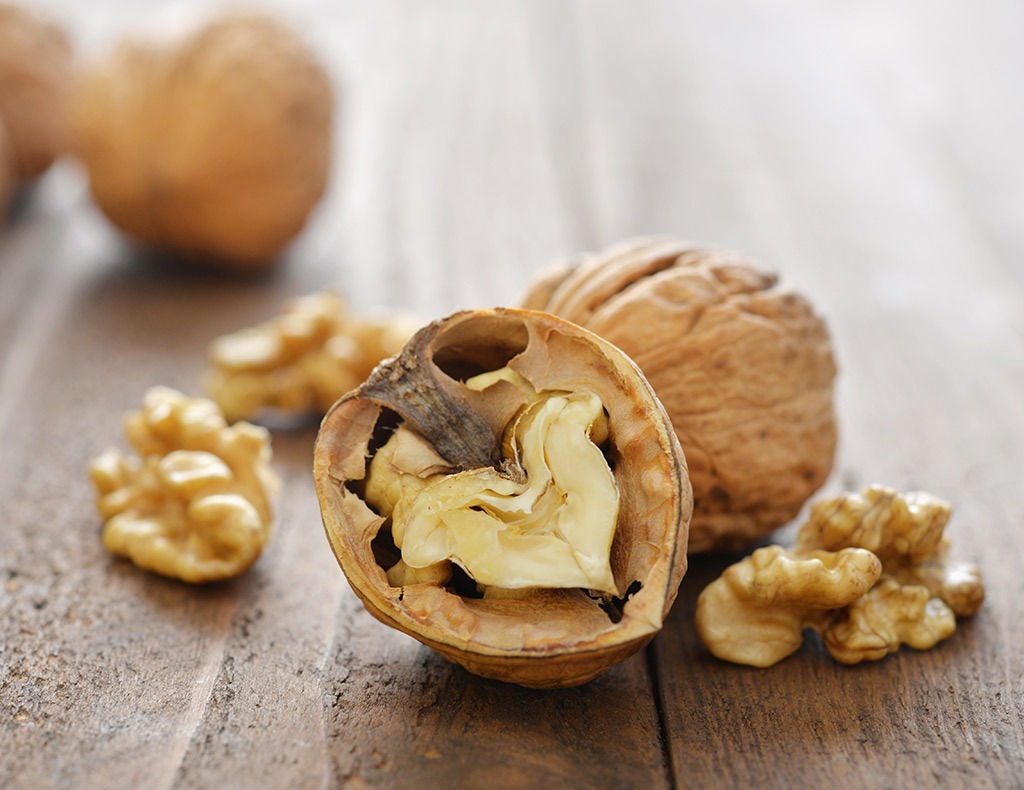
Omega-3 content: 2,656 mg per ¼ cup, shelled
Walnuts pack the most omega-3 punch of any nut or seed, and they're also high in disease-fighting antioxidants. This combination, according to a recent study, is highly protective against heart disease. The benefits of walnuts include helping reduce blood pressure and decrease inflammation in the blood vessels during times of stress. Toss some into salads or eat a handful as an afternoon snack.
Mackerel
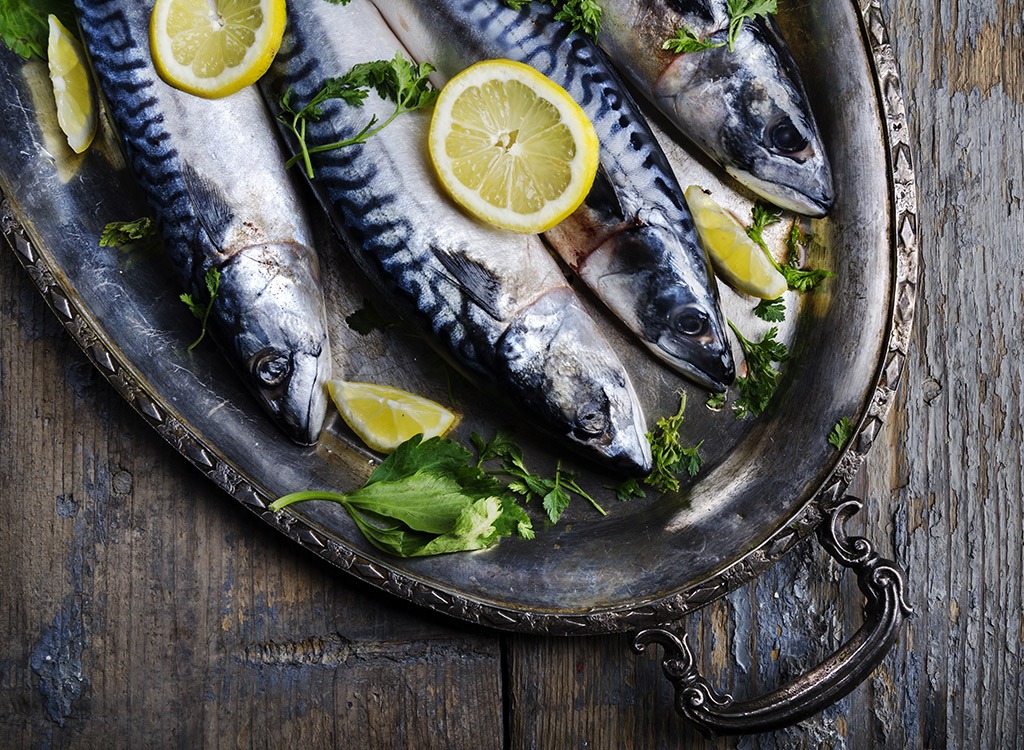
Omega-3 content: 2,753 mg per fillet (about 4 ounces)
As The New York Times puts it: "mackerel is milder than salmon, [but] just as delectable." So although mackerel lands a bit lower in omega-3s than salmon itself, if you're a fan of white fish, you can take comfort in knowing you'll be getting a solid amount of the anti-inflammatory nutrient by opting for mackerel.
Wild Salmon
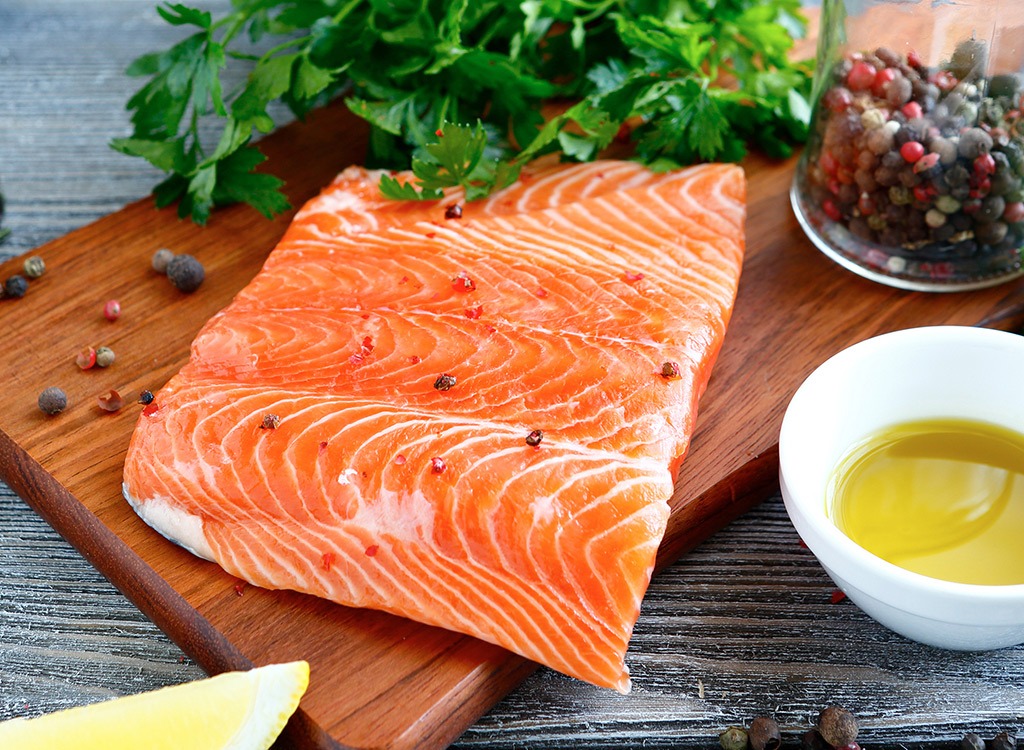
Omega-3 content: 3,428 mg in half a fillet (198 grams)
If you grabbed a bottle of omega-3 supplements off the shelf, that one pill you pop in your mouth has less than a third of the amount of omega-3s.
Flaxseed Oil
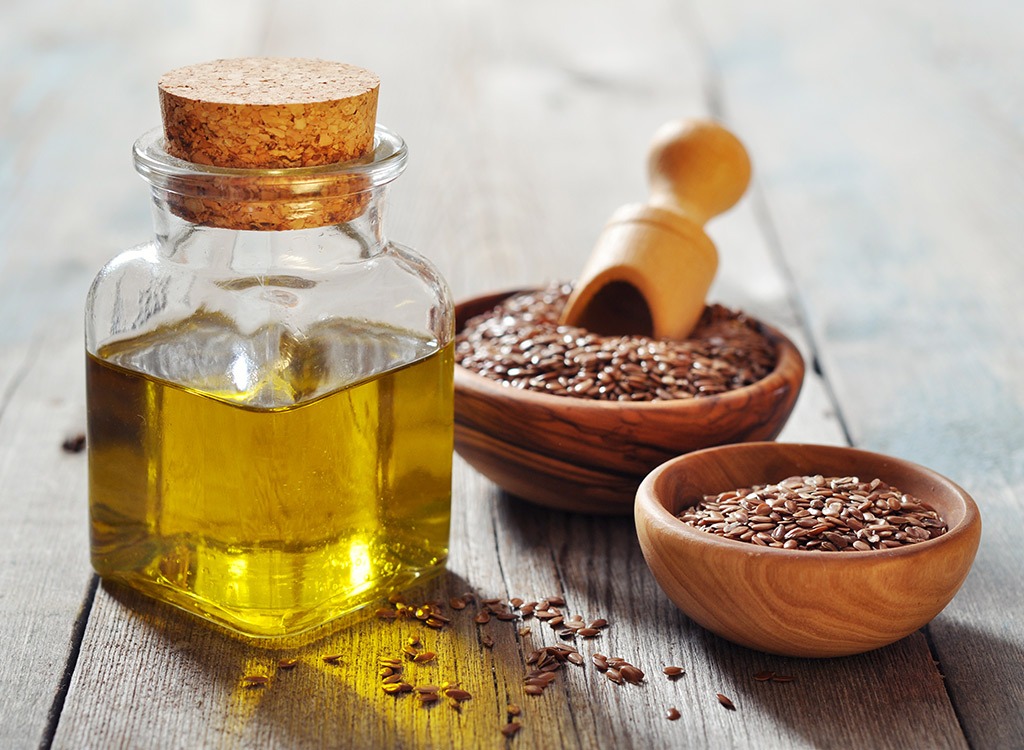
Omega-3 content: 7,258 mg per Tbsp
While whole flaxseeds are high in omega-3s, their hard exteriors often resist digestion, meaning you don't necessarily get the nutritional bang for your buck. Go for the ground version (also known as flax meal), or get nearly a week's worth of the good stuff by drizzling a little of the oil onto your salad. Studies have found flax to be helpful for cardiovascular disease symptoms like hypertension, according to a recent study in Hypertension.
